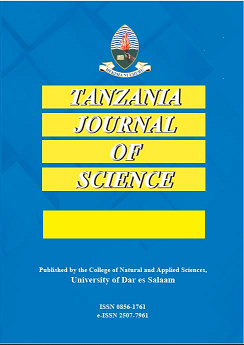Stellar Properties from a self-consistent Analysis
DOI:
https://doi.org/10.4314/tjs.v50i4.14Keywords:
Nebular, spectral energy distribution, population spectral synthesis, SDSSAbstract
Galaxies’ spectral energy distribution (SED) has been explored through the use of spectral synthesis codes. Most of the codes so far are solely stellar and assume a negligible nebular contribution. Fitting Analysis using Differential Evolution Optimisation (FADO) is the first spectral synthesis tool to consider the nebular contribution. The study examines how the primary stellar attributes are affected when FADO is applied to the Max Planck Institute for Astrophysics and Johns Hopkins University (MPA-JHU) data, namely the star-formation rate, metallicity, and stellar mass. The findings show that nebular emission results in the change of the slope of the equation of "the main sequence by 0.04 dex ", and " the vertical intercept by 0.3 dex ", and underestimates gas-phase metallicity of star-forming galaxies by 0.013.


